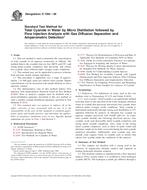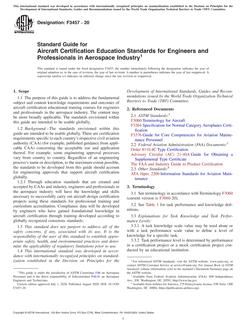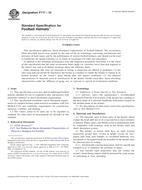1.1 This master matrix standard describes a series of standard practices, guides, and methods for the prediction of neutron-induced changes in light-water reactor (LWR) pressure vessel (PV) and support structure steels throughout a pressure vessel’s service life (Fig. 1). Some of these are existing ASTM standards, some are ASTM standards that have been modified, and some are proposed ASTM standards. General requirements of content and consistency are discussed in Section 6 . More detailed writers’ and users’ information, justification, and specific requirements for the nine practices, ten guides, and three methods are provided in Sections 3-5. Referenced documents are discussed in Section 2. The summary-type information that is provided in Sections 3 and 4 is essential for establishing proper understanding and communications between the writers and users of this set of matrix standards. It was extracted from the referenced documents, Section 2 and references (1-106) for use by individual writers and users.
1.2 This master matrix is intended as a reference and guide to the preparation, revision, and use of standards in the series and for planning and scheduling purposes. This index is to ensure the accomplishment of an objective irrespective of the time required, the number of ASTM committees concerned, or the complexity of the issues involved.
1.3 This master matrix standard provides a guide to ASTM standards related to the energy-critical areas that are to be developed under the category of Fission Reactor Development, Section 10, of Guide E584-77 and as discussed in Practice E583-97.
1.4 To account for neutron radiation damage in setting pressure-temperature limits and making fracture analyses (see Refs 2-7, 9-14, 21-57, 63, 69-71, 77, 78, 83-104 and Recommended Guide E509), neutron-induced changes in reactor pressure vessel steel fracture toughness must be predicted, then checked by extrapolation of surveillance program data during a vessel’s service life. Uncertainties in the predicting methodology can be significant. Techniques, variables, and uncertainties associated with the physical measurements of PV and support structure steel property changes are not considered in this master matrix, but elsewhere (1, 3, 4, 10-13, 17, 21, 22-27, 32-39, 42, 43, 45, 49-57, 71, 77, 78, 83, 91-104, and Recommended Guide E509). The techniques, variables and uncertainties related to (1) neutron and gamma dosimetry, (2) physics (neutronics and gamma effects), and (3) metallurgical damage correlation procedures and data are addressed in this master matrix (2,34 ). The main variables of concern to (1), (2), and (3) are as follows:
1.4.1 Steel chemical composition and microstructure,
1.4.2 Steel irradiation temperature,
1.4.3 Power plant configurations and dimensions, from the core edge to surveillance positions and into the vessel and cavity walls,
1.4.4 Core power distribution,
1.4.5 Reactor operating history,
1.4.6 Reactor physics computations,
1.4.7 Selection of neutron exposure units,
1.4.8 Dosimetry measurements,
1.4.9 Neutron spectral effects, and
1.4.10 Neutron dose rate effects.
1.5 A number of potential methods and standards exist for ensuring the adequacy of fracture control of reactor pressure vessel belt lines under normal and accident loads (1-4, 6, 7, 13, 14, 21-28, 29-34, 52-57, 71, 77, 78, 91, 93, Recommended Guide E509, and 2.3 ASME Standards). As older LWR pressure vessels become more highly irradiated, the predictive capability for changes in toughness must improve. Since during a vessel’s service life an increasing amount of information will be available from test reactor and power reactor surveillance programs, better procedures to evaluate and use this information can and must be developed (1-4, 6, 7, 9-15, 17, 21-34, 52-57, 69, 71-73, 77, 78, 91-104 and Recommended Guide E509). This master matrix, therefore, defines the current (1) scope, (2) areas of application, and (3) general grouping for the series of 22 ASTM standards, as shown in Figs. 1-3.
1.6 The values stated in SI units are to be regarded as the standard.
1.7 This standard may involve hazardous materials, operations, and equipment. This standard does not purport to address all of the safety concerns, if any, associated with its use. It is the responsibility of the user of this standard to establish appropriate safety and health practices and determine the applicability of regulatory limitations prior to use.
Product Details
- Published:
- 06/10/2002
- Number of Pages:
- 17
- File Size:
- 1 file , 150 KB
- Redline File Size:
- 2 files , 300 KB


